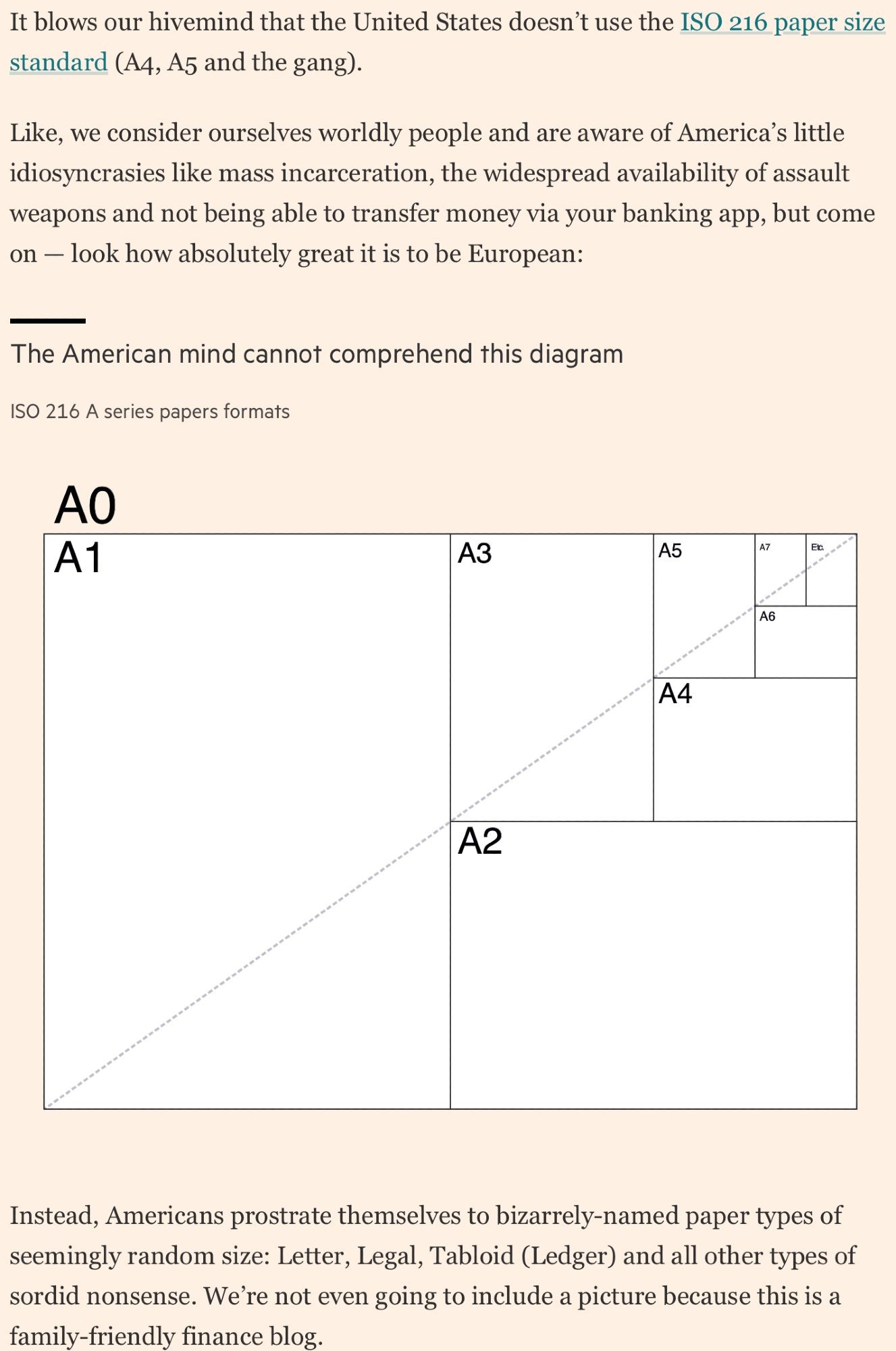this post was submitted on 28 May 2024
1066 points (99.7% liked)
196
16591 readers
2000 users here now
Be sure to follow the rule before you head out.
Rule: You must post before you leave.
founded 1 year ago
MODERATORS
you are viewing a single comment's thread
view the rest of the comments
view the rest of the comments

I’m German. If the pages are a comfortable size, why does no publisher ever use A5 or A4 paper? To quote an answer I gave to another comment here:
Another hint that the paper format is weird is that scientific papers on A4 are always either printed in two columns or use the ninths rule for margins, i.e. 1/9 of margin on the inner and upper edges and 2/9 of margin on the outer and bottom edges, essentially throwing away almost half of the page (I’ll admit there are more economic recommendations of 1/11 or 1/13). This is to make the columns narrower to get closer to the target of 60–80 characters per line. Note also that this makes the ‘usable’ area approximately 20cm long, which is much closer to the American’s ‘Legal’ format (216mm).
A5 is not 15x10,5
If A4 is 291x210 then OBVIOUSLY the next one starts with 210: 210x148.
You’re right. Sorry for getting my post-7pm arithmetic skills on you. However, my point still stands. ‘Close’ is not ‘conforming’ to the standard.
Close to your non standard book measurements. I really appreciate the usefulness of ISO 216, witch is actually a standard.
These are very valid arguments that can't be reduced to a lack of habit. Thanks for sharing your perspective!